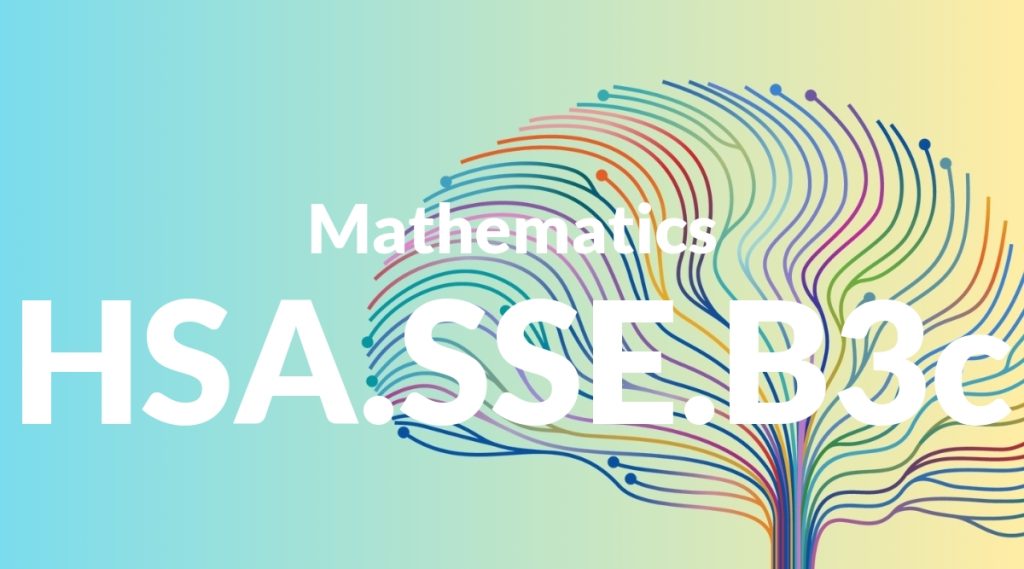Standard: HSA.SSE.B3c – Use the properties of exponents to transform expressions for exponential functions. For example the expression 1.15^t can be rewritten as (1.15^(1/12))^(12t) ≈ 1.012^(12t) to reveal the approximate equivalent monthly interest rate if the annual rate is 15%.
Grade level: High School: Algebra
Subject: Mathematics
Domain: Seeing Structure in Expressions
Teacher Overview
This standard focuses on using the properties of exponents to transform expressions for exponential functions. It is important because it helps students understand how different forms of an expression can provide different insights into the problem, especially in real-world applications like finance and science. Students should be comfortable with basic algebraic manipulations, including working with exponents and understanding the properties of exponential functions. They should also be able to recognize and create equivalent expressions.
Mastering this standard prepares students for more advanced topics in mathematics, such as logarithmic functions and calculus, and enhances their ability to solve real-world problems involving exponential growth and decay.
Common Misconception 1
One common misconception is that transforming an exponential expression changes its value. This is incorrect because the transformation is just a different way of writing the same value, not altering it.
Intervention 1
To address this misconception, use side-by-side comparisons of the original and transformed expressions with concrete examples. Show that substituting the same value for the variable yields the same result in both expressions.
Common Misconception 2
Another misconception is confusing the base and the exponent in exponential expressions. Students may incorrectly swap these elements or misinterpret their roles.
Intervention 2
Provide targeted practice that emphasizes identifying the base and the exponent in various expressions. Use visual aids and step-by-step examples to reinforce the correct interpretation.
Prerequisite Knowledge
Students should have a solid understanding of basic algebraic operations, particularly working with exponents and exponential functions. They should also be familiar with the properties of exponents and how to manipulate algebraic expressions.
Subsequent Knowledge
After mastering this standard, students will be able to apply their understanding of exponential functions to more complex real-world problems, such as logarithmic functions, and will be better prepared for advanced topics in calculus and financial mathematics.
Instructional Activities
- Create and solve problems involving the transformation of exponential expressions.
- Analyze real-world scenarios where exponential functions are used, such as finance and population growth.
- Group activities that involve peer teaching and collaborative problem-solving.
- Use graphing calculators or software to visualize the transformations of exponential functions.




